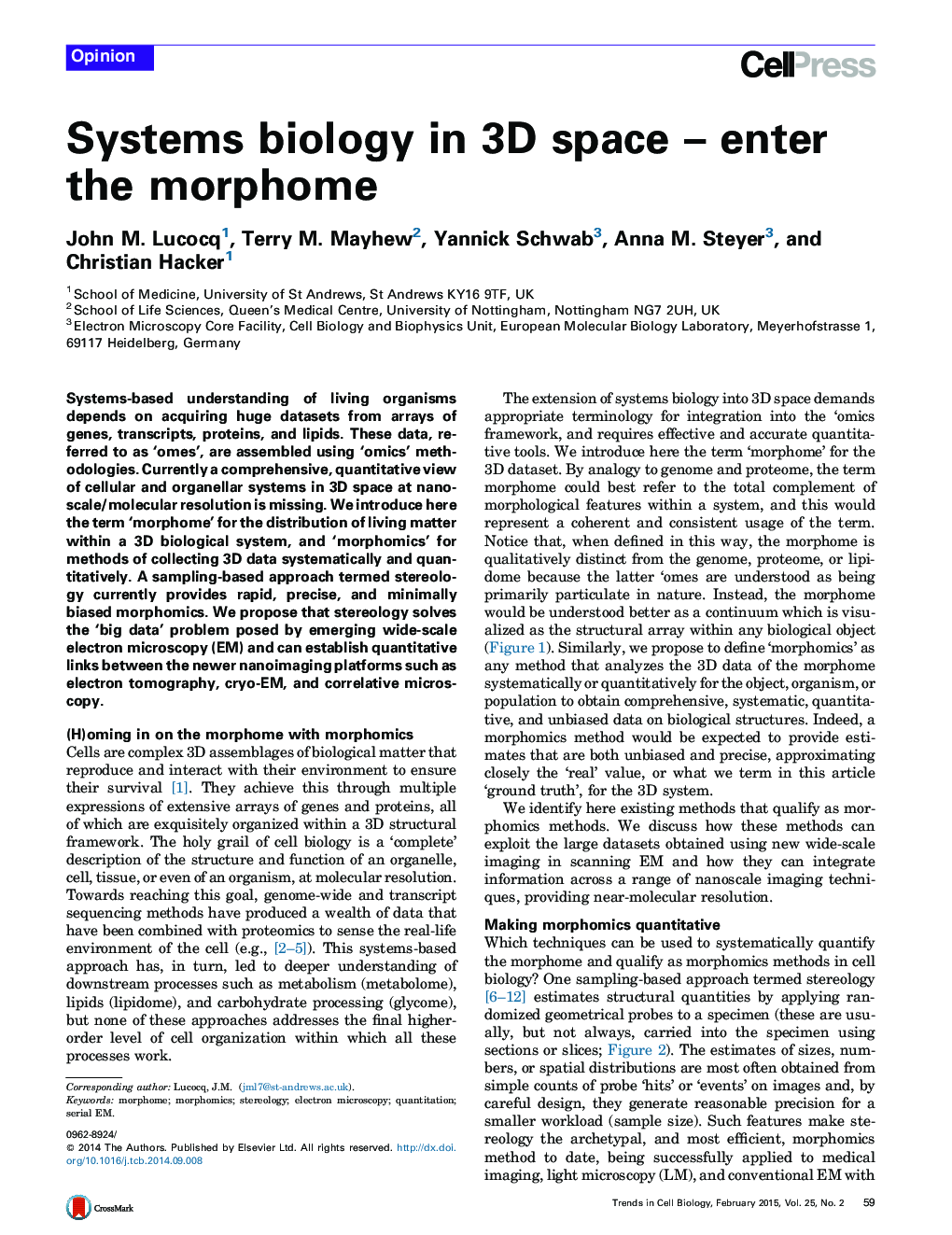| کد مقاله | کد نشریه | سال انتشار | مقاله انگلیسی | نسخه تمام متن |
|---|---|---|---|---|
| 2204447 | 1100784 | 2015 | 6 صفحه PDF | دانلود رایگان |

• We define the morphome as the distribution of matter in a 3D object.
• Morphomics methods characterize or quantify 3D data at ground truth level.
• Stereology is the most efficient and precise archetypal morphomics method.
• Stereology can be applied to solve the big data problem in serial EM.
• Stereology can be applied to make quantitative links between nanoscale imaging modes.
Systems-based understanding of living organisms depends on acquiring huge datasets from arrays of genes, transcripts, proteins, and lipids. These data, referred to as ‘omes’, are assembled using ‘omics’ methodologies. Currently a comprehensive, quantitative view of cellular and organellar systems in 3D space at nanoscale/molecular resolution is missing. We introduce here the term ‘morphome’ for the distribution of living matter within a 3D biological system, and ‘morphomics’ for methods of collecting 3D data systematically and quantitatively. A sampling-based approach termed stereology currently provides rapid, precise, and minimally biased morphomics. We propose that stereology solves the ‘big data’ problem posed by emerging wide-scale electron microscopy (EM) and can establish quantitative links between the newer nanoimaging platforms such as electron tomography, cryo-EM, and correlative microscopy.
Journal: - Volume 25, Issue 2, February 2015, Pages 59–64